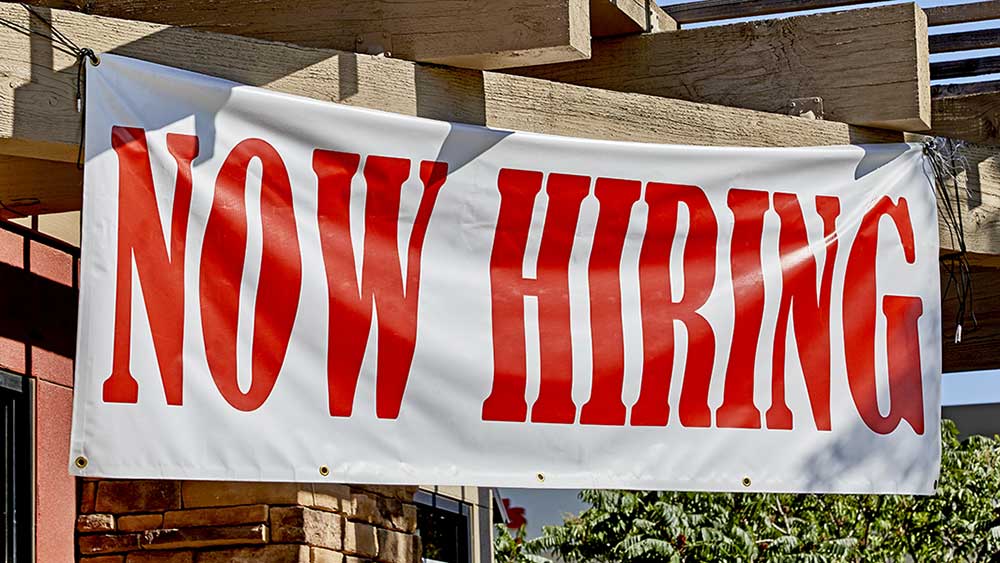Job growth stayed too hot for the Fed in February, as employers added 311,000 payroll positions. Yet the unemployment rate rose more than expected and wage growth was surprisingly soft. The S&P 500 initially climbed after the jobs report as odds of a half-point Fed rate hike fell, but markets then swung lower in volatile Friday stock market action.
X
Jobs Report Hits And Misses
Employment gains topped Wall Street’s 223,000 forecast, as the private-sector added 265,000 positions and government employment rose by 46,000.
The average hourly wage rose 0.2% on the month vs. forecasts of 0.3%. Annual wage growth of 4.6% undershot 4.7% expectations.
The unemployment rate rose to 3.6% vs. expectations of 3.4%.
January’s stunning gain of 517,000 jobs, which along with hot inflation and retail sales in the month had shocked the Fed, was revised only slightly to 504,000 jobs. Along with a revision to December data, the prior two months of payroll growth saw a downward revision of 34,000.
The headline job and wage figures come from the Labor Department’s monthly survey of employers. The separate household survey details labor force participation, work status and the unemployment rate.
Household survey data showed the ranks of the employed rising 177,000 and unemployed increasing by 242,000 as 419,000 people joined the labor force. The labor force participation rate, which includes those working or actively seeking work, ticked up to 62.5%.
S&P 500 Reaction
The S&P 500 fell 0.6% in volatile Friday morning stock market action, reversing an initial rally following the jobs report.
Meanwhile, the 10-year Treasury yield fell 20 basis points to 3.72%. The drop in the 10-year yield could be signaling higher odds of a recession, particularly if the Fed picks up the pace of rate hikes into a softening job market. However, signs of financial fragility also may be contributing to a safety bid for Treasuries.
Treasury Secretary Janet Yellen told the House Ways and Means Committee that she’s monitoring “developments that concern few banks.”
On Thursday, the S&P 500 slumped 1.85%, falling through key support at its 200-day moving average.
Through Thursday’s close, the S&P 500 remained 9.5% above its Oct. 12 bear-market closing low, but 18.3% below its all time high.
Be sure to read IBD’s The Big Picture every day to stay in sync with the market direction and what it means for your trading decisions.
More Jobs Report Details
Construction jobs rose 24,000. Leisure and hospitality sector employment rose by 105,000. Retailers added 50,000 jobs. Health care and social assistance jobs grew by 63,000.
Weak spots included information technology (-25,000), transportation and warehousing (-21,500) and manufacturing (-4,000).
The average workweek slipped to 34.5 hours from 34.6 hours, meaning employers didn’t have to ride their workers quite as hard to keep up with demand.
The diffusion index showing the breadth of hiring fell to 56 from 68 in January. A diffusion index of 50 means an equal balance between the number of industries increasing and decreasing employment.
Ian Shepherdson, chief economist at Pantheon Macroeconomics, noted that wage growth over the past three months has slowed to an annualized 3.6% rate. That’s basically in line with the 3.5% wage growth Fed chair Jerome Powell has said is consistent with the 2% inflation target.
Fed Policy Impact Of Jobs Report
Underlying details in the jobs report, from a shorter workweek to a narrower breadth of hiring and tepid wage gains show the job market is getting softer. The key question is whether it is happening fast enough for the Fed.
Fed chair Powell’s Senate testimony, which socked the S&P 500 rally in the gut on Tuesday, boosted the odds of a half-point rate hike on March 22 as high as 80%. But following the jobs report, those odds of a half-point hike fell back to around 40%.
Powell’s key line: “If the totality of the data were to indicate that faster tightening is warranted, we would be prepared to increase the pace of rate hikes.”
Unless the Fed is concerned about the health of banks, the hurdle for policymakers to settle for a quarter-point hike may be high.
First, Fed officials believe the costs of not hiking enough are much greater than the costs of hiking too much. The longer this bout of high inflation lasts, the harder it may be to quell it. That is the lesson of 15-year bout of high inflation that lasted from the late 1960s to the early 1980s, Powell has said. While the Fed doesn’t want a recession, officials don’t lose sleep over it, because the Fed has had good success reviving a sick economy with rate cuts and asset purchases.
Second, until recently, Fed officials had pretty much failed to convince markets that rates would move higher and stay there for longer. That had consequences. Treasury yields fell, lowering borrowing costs and helping give the economy a second wind. Now that markets are finally listening to the Fed, policymakers probably won’t want to hike less than markets are betting, because that would allow for easier financial conditions.
YOU MAY ALSO LIKE:
These Are The 5 Best Stocks To Buy And Watch Now
Join IBD Live Each Morning For Stock Tips Before The Open
Image and article originally from www.investors.com. Read the original article here.

